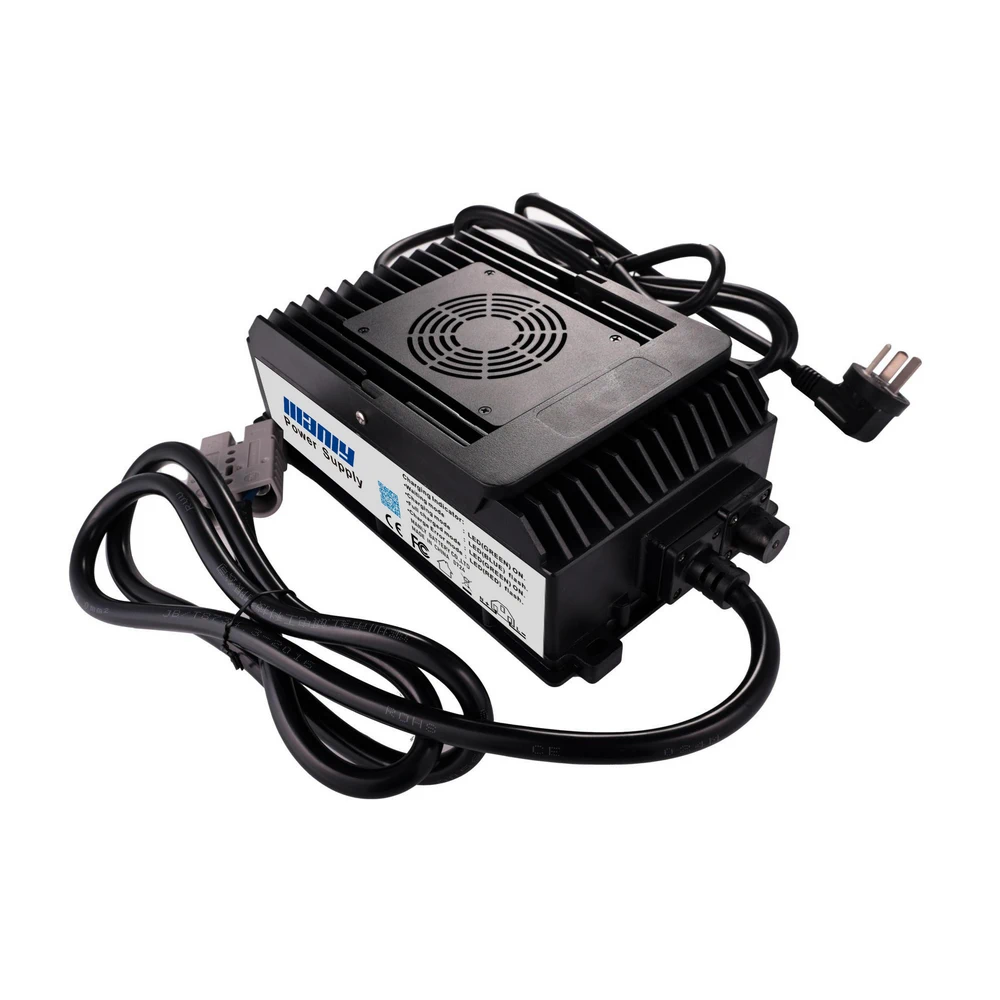Exploring UPS System Batteries: Essential Roles and Functions
Table of Contents
Welcome to the world of Uninterruptible Power Supply, or UPS, systems! If you’ve ever wondered about how the gadgets and devices in hospitals, data centers, and even your home office keep running smoothly during a power outage, you’re about to find out. Today, we’re diving into the essential roles and functions of UPS batteries, which play a crucial role in our digital and medical infrastructures.First off, let's clear up some basics. When we talk about a UPS, we're referring to a system designed to keep electronic devices powered in the event of a power outage. So, what is a UPS unit? Simply put, it’s a device that instantly switches to battery power when it detects that the main power has been interrupted. This transition happens so quickly that the devices connected to the UPS don’t even notice the switch – they keep running without a hiccup!Now, you might be asking, "What does UPS battery mean?" or "Define UPS." A UPS, or Uninterruptible Power Supply, is essentially a guard against power interruptions. It combines a battery and a few other components to make sure your essential gadgets and machines don’t turn off unexpectedly. This is super important in places like hospitals, where equipment needs to be on all the time.Let’s break down the main parts of a UPS system:
- Batteries: These are the heart of the UPS. They store the energy that’s used when the main power goes out.
- Rectifier: This component converts the incoming AC (alternating current) power to DC (direct current), charging the battery.
- Inverter: The inverter’s job is to switch things back, turning the DC power from the battery into AC power that your devices can use.
- Static Bypass Switch: Think of this as a backup plan. If something goes wrong with the UPS, this switch allows power to go around the problem part and keep flowing to your devices.
UPS Battery Meaning and Functionality
When we talk about a UPS, or an Uninterruptible Power Supply, we're discussing a critical component in keeping electronic devices running smoothly without interruption. A UPS is essentially a safeguard that ensures our computers, medical equipment, and other electronic devices continue to operate during a power outage. Here, let's explore the meaning of UPS batteries and their role in these systems.What is a UPS?
At its core, a UPS is a system that combines batteries (usually maintenance-free lead-acid batteries) with a main host that converts direct current (DC) from the batteries into alternating current (AC), which is the type of current that powers most of our household and office devices. This ability to seamlessly switch from mains electricity to battery power during electrical interruptions is what defines the UPS. Essentially, it serves three main purposes: voltage stabilization, filtration of electrical noise, and providing an uninterrupted power supply.Functionality of UPS Batteries
The functionality of UPS batteries centers around these critical roles:- Voltage Stabilization: When connected to a regular power source, the UPS regulates the voltage to ensure a steady power supply that protects devices from spikes and drops in power, which are common during stormy weather or other disruptions.
- Power Filtration: Besides regulating power, UPS systems also filter out electrical noise and interference that can harm sensitive electronics or disrupt their operation.
- Uninterrupted Power: The most recognized function of a UPS is to provide uninterrupted power. In the event of a power outage, the UPS quickly switches to battery power, ensuring that connected devices continue to operate without a hitch. This is crucial for equipment like servers and medical machinery, which need constant power to function properly.
Application of UPS in North America and Europe
In North America, large data centers typically use three-phase 480V UPS systems, which differ from the standard three-phase 208V used in other commercial settings. This difference allows for handling the higher power requirements of large-scale operations. Similarly, European data centers often use three-phase 400V systems, aligning with local power standards to ensure efficiency and reliability.Protective Measures
UPS systems are designed to tackle at least nine different electrical issues, including complete power outages, lightning-induced surges, fluctuations in power frequency, and more. By protecting against these problems, a UPS ensures that not only is the operation of devices uninterrupted, but also that the life span and integrity of these devices are maintained.In summary, a UPS battery plays a pivotal role in modern technology, providing critical backup power, stabilizing voltage, and filtering unwanted electrical noise. Understanding the "UPS battery meaning" helps users appreciate the essential security layer that these systems provide to our digital and medical infrastructures.
History of Uninterrupted Power Supply
The history of the Uninterruptible Power Supply (UPS) is a fascinating journey that begins in the early 20th century. This technology, which plays a crucial role in today’s digital and healthcare infrastructures, has evolved significantly from its initial conception to the sophisticated systems we rely on today. Let's dive into the development of UPS systems, exploring key milestones and innovations.Early BeginningsThe concept of an uninterruptible power supply emerged in the United States. In 1903, the first Emerson UPS system was introduced in Los Angeles, marking the beginning of a new era in electrical supply reliability. However, the significant development came with John J. Hanley, who is credited with inventing the modern UPS.John J. Hanley and His InventionJohn J. Hanley, concerned with the safety of rail passenger trains which operated on electricity, foresaw the need for a system that could prevent disruptions in electrical supply. His concern was that any failure in the electrical systems could potentially allow a train to travel uncontrollably, posing severe risks to passenger safety.In 1934, Hanley obtained a patent for what he called the "Apparatus for Maintaining an Unfailing and Uninterrupted Supply of Electrical Energy." This innovative device was designed to automatically switch to battery power during a power failure, while an external source would normally charge the battery. This system was the precursor to what we now recognize as the UPS.Evolution of TechnologyThe first UPS systems were based on flywheel rotary designs. These early systems could provide backup power for a short duration—typically between 20 seconds to 90 seconds—sufficient to handle brief outages or to allow for safe shutdown of equipment. The flywheel would spin at high speeds, building up kinetic energy that, when needed, was converted into electrical energy to maintain power supply temporarily.Modern UPS SystemsAs technology advanced, so did UPS systems. The introduction of maintenance-free lead-acid batteries expanded the capabilities of UPS systems, allowing them to provide longer periods of backup power and making them suitable for a wider range of applications. Today’s UPS systems vary in size and complexity, from small units that protect individual computers to massive installations that ensure the continuous operation of entire data centers.Current Uses and ImportanceUPS systems are now integral to the operation of critical infrastructure across various sectors. They ensure the continuous operation of hospitals, data centers, financial institutions, and more, safeguarding against data loss and equipment damage that can result from sudden power disruptions.The meaning of UPS batteries in today's context goes beyond just providing backup power; they are a key component in the reliability and efficiency of modern power management systems, supporting a range of critical applications.Components of a UPS System
Understanding the components of a UPS (Uninterruptible Power Supply) system is essential for anyone relying on these units to protect their electronic devices from sudden power losses. A UPS does more than just provide backup power; it ensures that your devices can continue running smoothly during power interruptions. Here, we'll break down the main components of a UPS system and explain their functions in easy-to-understand terms.What is a UPS Unit?
A UPS unit is a device designed to provide backup power to your electronics when the main power source fails. It differs from emergency power systems or standby generators in that it provides near-instantaneous protection from input power interruptions by using energy stored in its batteries. This allows critical systems and devices to keep running without interruption during a power outage.Key Components of a UPS System
- Batteries (UPS Battery)
- The battery is the heart of the UPS system. It stores electrical energy in chemical form so it can be converted back to electrical energy whenever it's needed. When the main power is on, the battery charges, and when the power goes out, the battery steps in to provide power. Because of its crucial role, the battery is often considered both a vital asset and a common source of failure in UPS systems. Keeping batteries in good condition is key to ensuring reliable UPS performance.
- Rectifier
- The rectifier serves a dual purpose in a UPS system. Its first role is to convert alternating current (AC) from the main power supply into direct current (DC). This DC is then used to charge the UPS battery. The second role of the rectifier is to supply DC to the inverter when the UPS is active, ensuring that the battery is always ready to go when needed. This component is crucial because it manages the flow of power from the main supply to the UPS system and ensures that the battery is properly charged.
- Inverter
- Once the power from the main supply is interrupted or fails, the inverter takes over. The inverter's job is to convert the DC power, which has been either stored in the battery or supplied by the rectifier, back into AC power. This AC power is what your devices need to continue operating seamlessly. The inverter ensures that the transition from main power to battery power is smooth and almost instantaneous, which is crucial for maintaining the operation of sensitive electronic equipment.
- Static Bypass Switch
- The static bypass switch is a safety feature in a UPS system. It allows power from the main supply to bypass the UPS components and go directly to the load (your devices). This is especially useful if there's a failure within the UPS itself. By bypassing the faulty components, the static bypass switch ensures that power continues to flow to your devices, providing an additional layer of protection and reliability.
Types of UPS Systems
UPS systems can be broadly classified into three main types based on their working principle: Standby, Line-Interactive, and Online.- Standby UPS (Offline UPS)
- This is the simplest type of UPS and is generally the most cost-effective option. It offers basic protection by providing power from the battery when it detects a power failure. The transition to battery power typically takes about 10 milliseconds. Standby UPS systems are widely used for home computers, small office hardware, and point-of-sale (POS) systems. Their simple design contributes to their reliability and affordability.
- Line-Interactive UPS
- The line-interactive UPS offers more advanced features compared to the standby UPS. It includes a special transformer that can adjust voltage fluctuations, which helps in maintaining a consistent power output during minor power sags and surges without having to switch to battery. This type of UPS also typically has a faster transfer time than standby systems, usually under 4 milliseconds, and provides better overall power conditioning. It is suitable for business environments and devices that require a moderate level of power protection.
- Online UPS (Double-Conversion UPS)
- Online UPS systems provide the highest level of protection by continuously converting incoming AC power to DC to charge the battery, then back to AC before powering connected devices. There is no transfer time in the event of a power loss. This type of UPS can handle a wide range of power problems such as voltage spikes, fluctuations, and noise, delivering clean and stable power. Due to their complexity and cost, online UPS systems are typically used in critical power applications, such as data centers, hospitals, and other settings where power interruptions cannot be tolerated.
- Low Frequency UPS: These systems use a silicon-controlled rectifier (SCR) and an isolation transformer operating at the utility frequency of 50 Hz. They are known for their robustness and are commonly used in applications requiring high power capacity and reliability.
- High Frequency UPS: High frequency UPS systems utilize high-frequency switching technology in their rectifiers and inverters. These systems are generally more compact and efficient than low frequency UPS systems, with switching frequencies ranging from a few kHz to tens of kHz. They are suitable for protecting small to medium-sized servers, telecom installations, and other sensitive electronics.




















